Grindbakken by Rotor
Belgian design collective Rotor interfered with the restoration of these disused dockside gravel pits to reveal traces of Ghent's industrial past (+ slideshow).
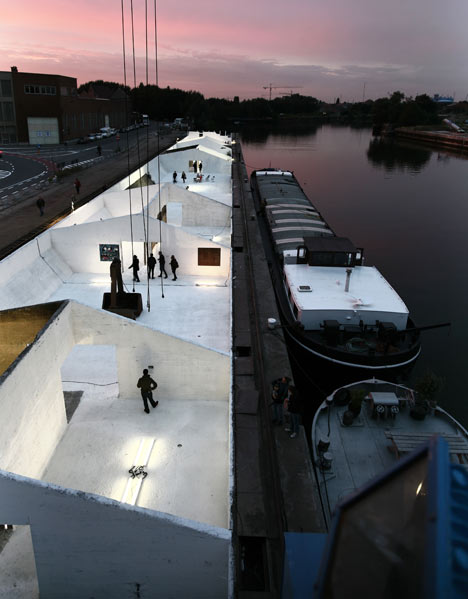
The Grindbakken pits were formerly used to transfer sand and gravel between ships and lorries, but were being cleaned up and painted white to be used for events and exhibitions.
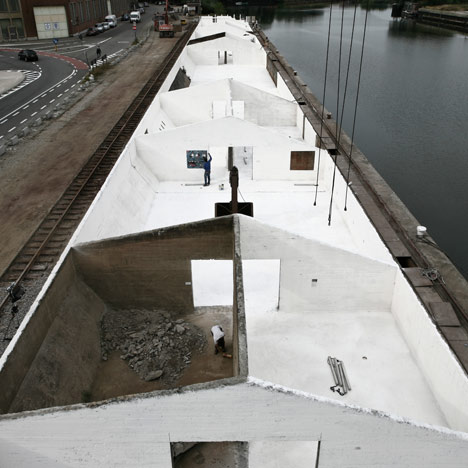
Rotor were commissioned by architect Sarah Melsens and artist Roberta Gigante to create an installation for the spaces, but instead selected 36 areas of interest around the site for protection from the paintwork.
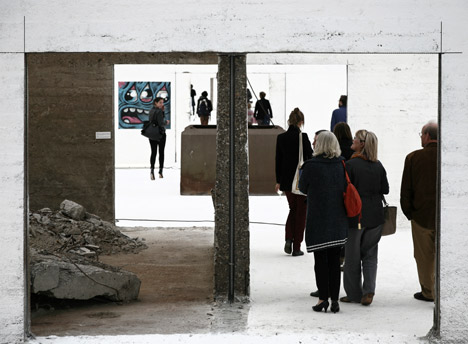
Some of the areas display colourful graffiti, while others show markings that reveal the industrial history of the pits.
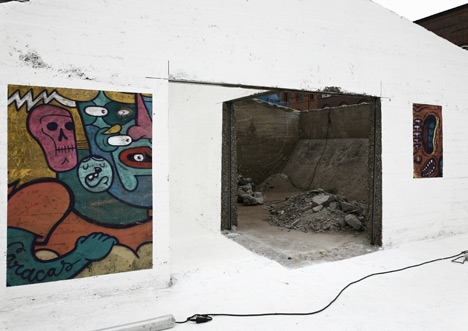
One large square frame reveals a wall stained deep red, indicating that the pit was once used in an emergency to store iron ore.
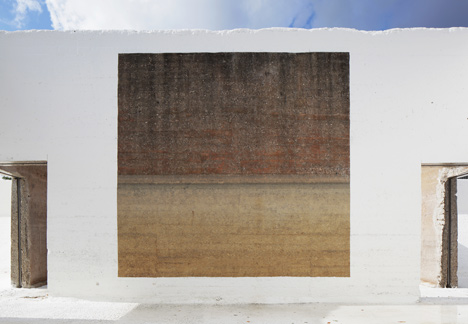
Above: image is by Johnny Umans
Another frame surrounds a patch of lichen, the size of which can be used to determine that the heap of sand or gravel stood in the pit for 15 years.
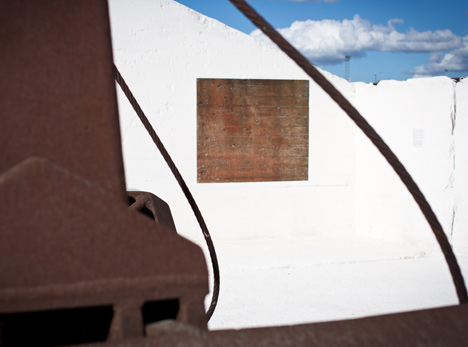
Above image is by Eric Mairiaux
Elsewhere, a long and narrow strip runs along a wall to reveal the seam between two layers of poured concrete.
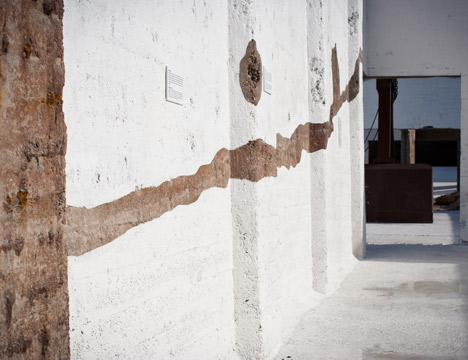
Above: image is by Eric Mairiaux
Grindbakken is open to the public until 21st October 2012 at Dok Noord 7.
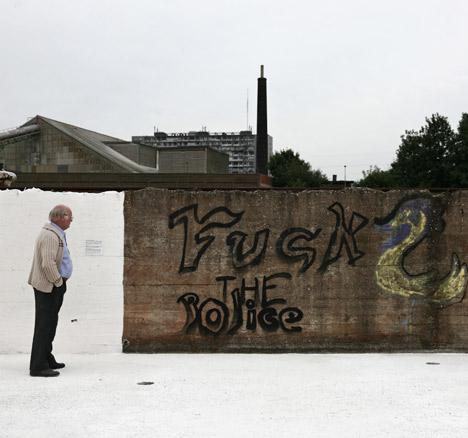
Last year Rotor curated an exhibition about the the working processes of international architecture practice OMA at the Barbican in London.
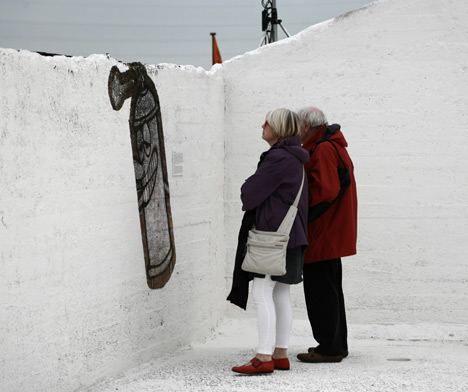
See all our stories about Belgium »
See all our stories about installations »
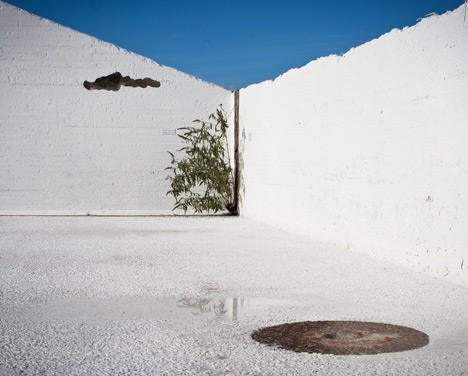
Above: image is by Eric Mairiaux
Photographs are by Rotor except where otherwise indicated.
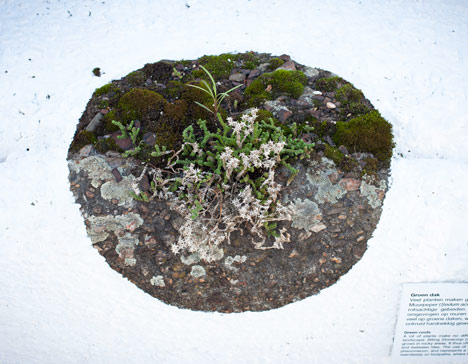
Above: image is by Eric Mairiaux
Here's some more information from Rotor:
Grindbakken
Freely accessible from 21/9/2012 till 21/10/2012
Dok Noord 7, Gent (near the blue crane)
A masterplan has been designed for the docks of Ghent. Some buildings have to disappear while concrete will be poured somewhere else, waterside dwellers will meet new neighbours and yesterday’s practices will make way for current activities. Following this plan, the concrete structure of the Grindbakken – used in the past to transfer gravel and sand between ships and trucks – was about to be transformed into a multi-purpose area accessible to the public, supplied with water and electricity and painted white as an empty canvas for future activities.
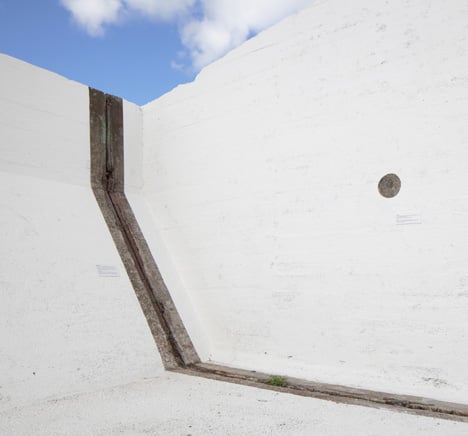
Above: image is by Johnny Umans
When we were asked to present a first intervention in this space, we chose to interfere in this painting process. We selected and documented specific areas of interest, and 36 frames were built on-site to protect these areas during the cleaning and painting.
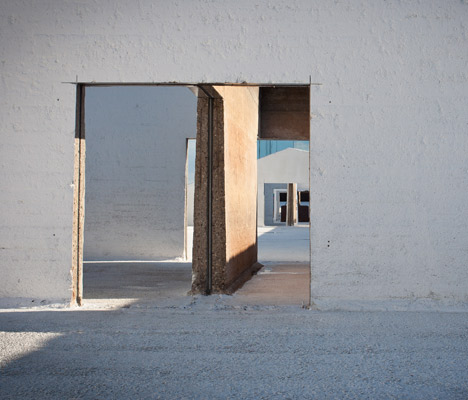
Above: image is by Eric Mairiaux
No one painted the frame; the red colour came about another way. As a rule, these depots were only used to store gravel and sand. But they were once also used in an emergency to stock iron ore. The brief presence of this substance left a bright red colour in some of the depots. But this still only explains one of the many shades visible on this concrete wall.
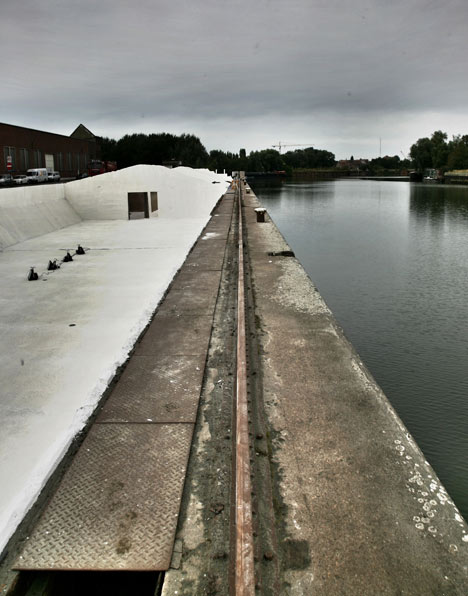
A seam runs across the entire wall. The pouring of the concrete for the wall happened in two stages: the first part has set or even partially hardened before the rest of the formwork was filled. The surface above the construction joint is in a worse condition and contains more gravel pockets: it seems the second pouring was of a lesser quality.
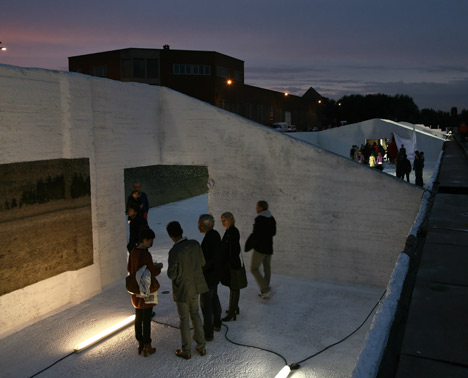
The gravel depots were designed for bulk transport logistics: materials were stocked in heaps. The biological growth patterns reveal the presence of such heaps. Since the diameter of the white lichens on this wall grew at a rate of roughly 3 mm per year and since the largest instances measure 5 cm, it can be estimated that the heaps were here for 15 years.
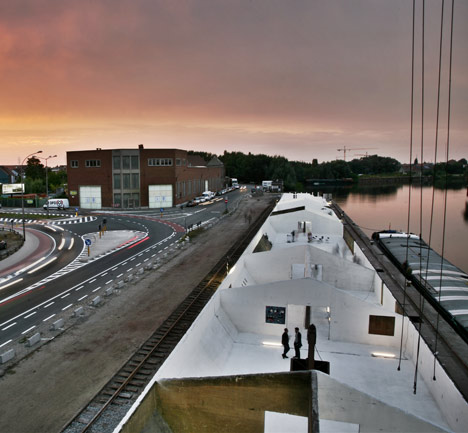
A project by Rotor: Tristan Boniver, Renaud Haerlingen, Lionel Billiet, Maarten Gielen.
Commissioned by: Sarah Melsens and Roberta Gigante
With the support of AGSOB
Thanks to the ones who helped for the content research: Geert De Schutter, Wouter Van Landuyt, Maurice Hoffmann, Gilbert Velghe, Michel Procès.
Special thanks to: Lieve Van Damme, Yves Deckmyn, Yves Trenson, Patrick Van De Gehuchte and their teams, Lola Bazin, Matthijs Fieuws, Daniel Van Drimmelen, Muhammed Karabelen.
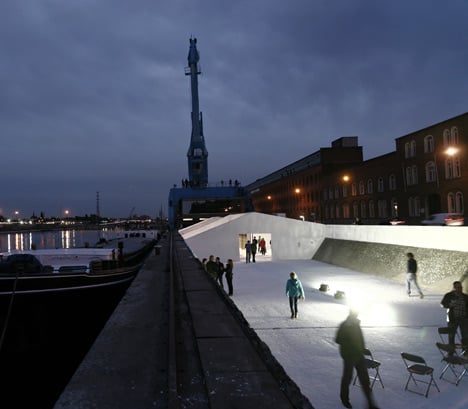
Founded in 2005, Rotor is a collective of people with a common interest in the material flows in industry and construction. On a practical level, Rotor handles the conception and realisation of design and architectural projects. On a theoretical level, Rotor develops critical positions on design, material resources, and waste through research, exhibitions, writings and conferences.